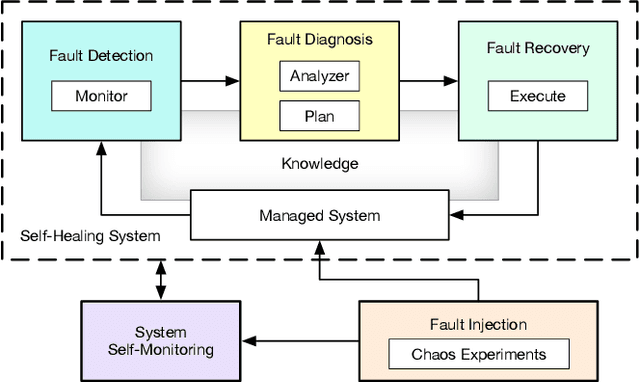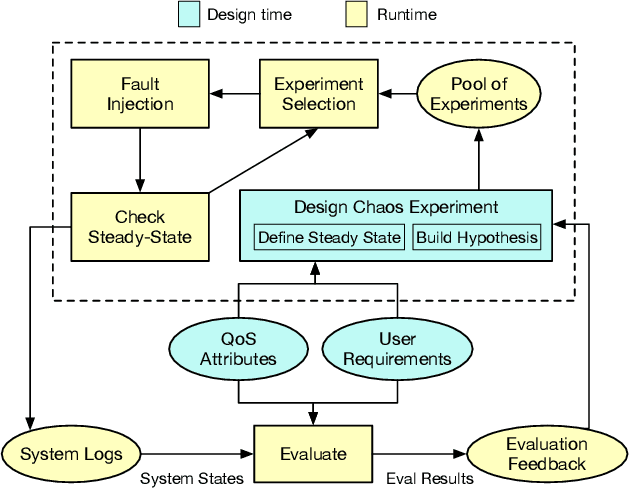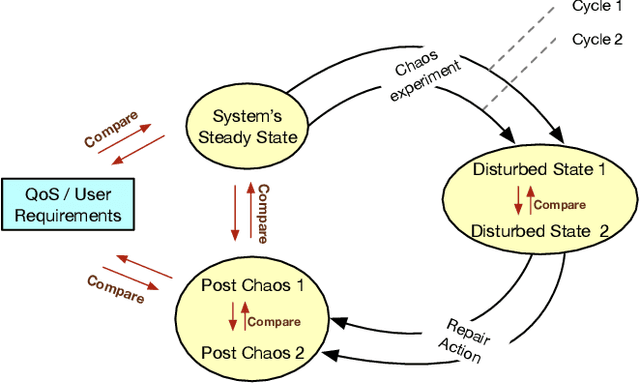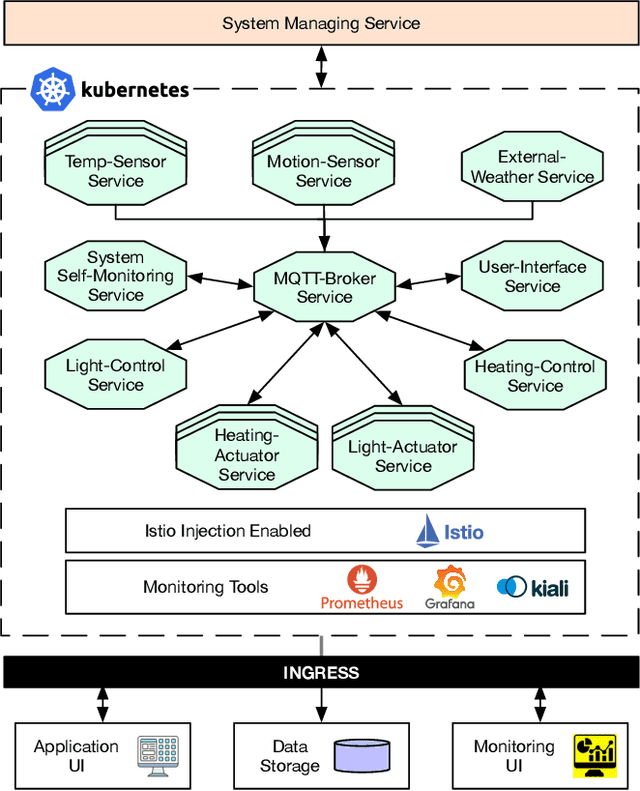Sehrish Malik
CHESS: A Framework for Evaluation of Self-adaptive Systems based on Chaos Engineering
Mar 13, 2023



Abstract:There is an increasing need to assess the correct behavior of self-adaptive and self-healing systems due to their adoption in critical and highly dynamic environments. However, there is a lack of systematic evaluation methods for self-adaptive and self-healing systems. We proposed CHESS, a novel approach to address this gap by evaluating self-adaptive and self-healing systems through fault injection based on chaos engineering (CE) [ arXiv:2208.13227 ]. The artifact presented in this paper provides an extensive overview of the use of CHESS through two microservice-based case studies: a smart office case study and an existing demo application called Yelb. It comes with a managing system service, a self-monitoring service, as well as five fault injection scenarios covering infrastructure faults and functional faults. Each of these components can be easily extended or replaced to adopt the CHESS approach to a new case study, help explore its promises and limitations, and identify directions for future research. Keywords: self-healing, resilience, chaos engineering, evaluation, artifact
On Evaluating Self-Adaptive and Self-Healing Systems using Chaos Engineering
Aug 28, 2022



Abstract:With the growing adoption of self-adaptive systems in various domains, there is an increasing need for strategies to assess their correct behavior. In particular self-healing systems, which aim to provide resilience and fault-tolerance, often deal with unanticipated failures in critical and highly dynamic environments. Their reactive and complex behavior makes it challenging to assess if these systems execute according to the desired goals. Recently, several studies have expressed concern about the lack of systematic evaluation methods for self-healing behavior. In this paper, we propose CHESS, an approach for the systematic evaluation of self-adaptive and self-healing systems that builds on chaos engineering. Chaos engineering is a methodology for subjecting a system to unexpected conditions and scenarios. It has shown great promise in helping developers build resilient microservice architectures and cyber-physical systems. CHESS turns this idea around by using chaos engineering to evaluate how well a self-healing system can withstand such perturbations. We investigate the viability of this approach through an exploratory study on a self-healing smart office environment. The study helps us explore the promises and limitations of the approach, as well as identify directions where additional work is needed. We conclude with a summary of lessons learned.
Adaptive Immunity for Software: Towards Autonomous Self-healing Systems
Jan 07, 2021

Abstract:Testing and code reviews are known techniques to improve the quality and robustness of software. Unfortunately, the complexity of modern software systems makes it impossible to anticipate all possible problems that can occur at runtime, which limits what issues can be found using testing and reviews. Thus, it is of interest to consider autonomous self-healing software systems, which can automatically detect, diagnose, and contain unanticipated problems at runtime. Most research in this area has adopted a model-driven approach, where actual behavior is checked against a model specifying the intended behavior, and a controller takes action when the system behaves outside of the specification. However, it is not easy to develop these specifications, nor to keep them up-to-date as the system evolves. We pose that, with the recent advances in machine learning, such models may be learned by observing the system. Moreover, we argue that artificial immune systems (AISs) are particularly well-suited for building self-healing systems, because of their anomaly detection and diagnosis capabilities. We present the state-of-the-art in self-healing systems and in AISs, surveying some of the research directions that have been considered up to now. To help advance the state-of-the-art, we develop a research agenda for building self-healing software systems using AISs, identifying required foundations, and promising research directions.
 Add to Chrome
Add to Chrome Add to Firefox
Add to Firefox Add to Edge
Add to Edge